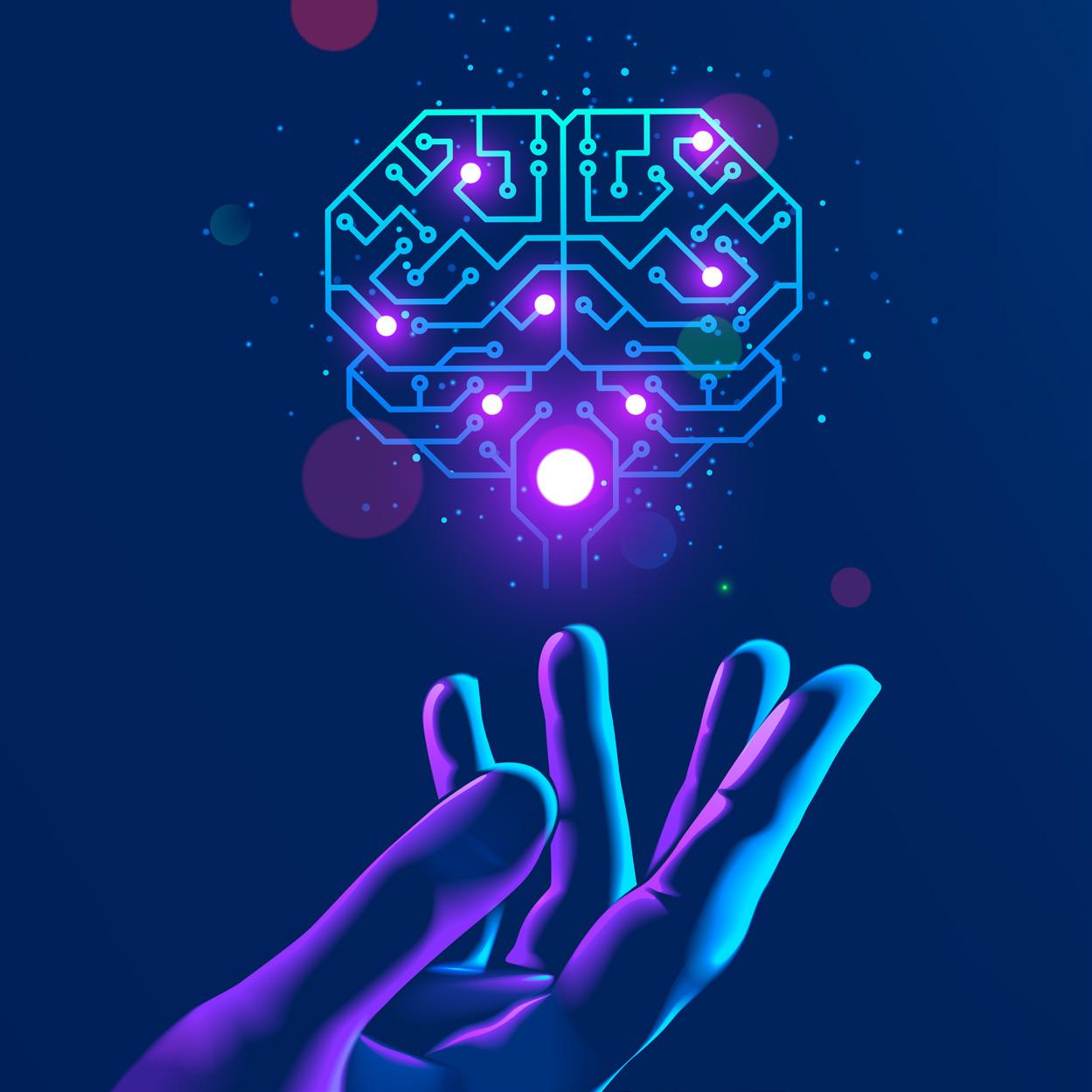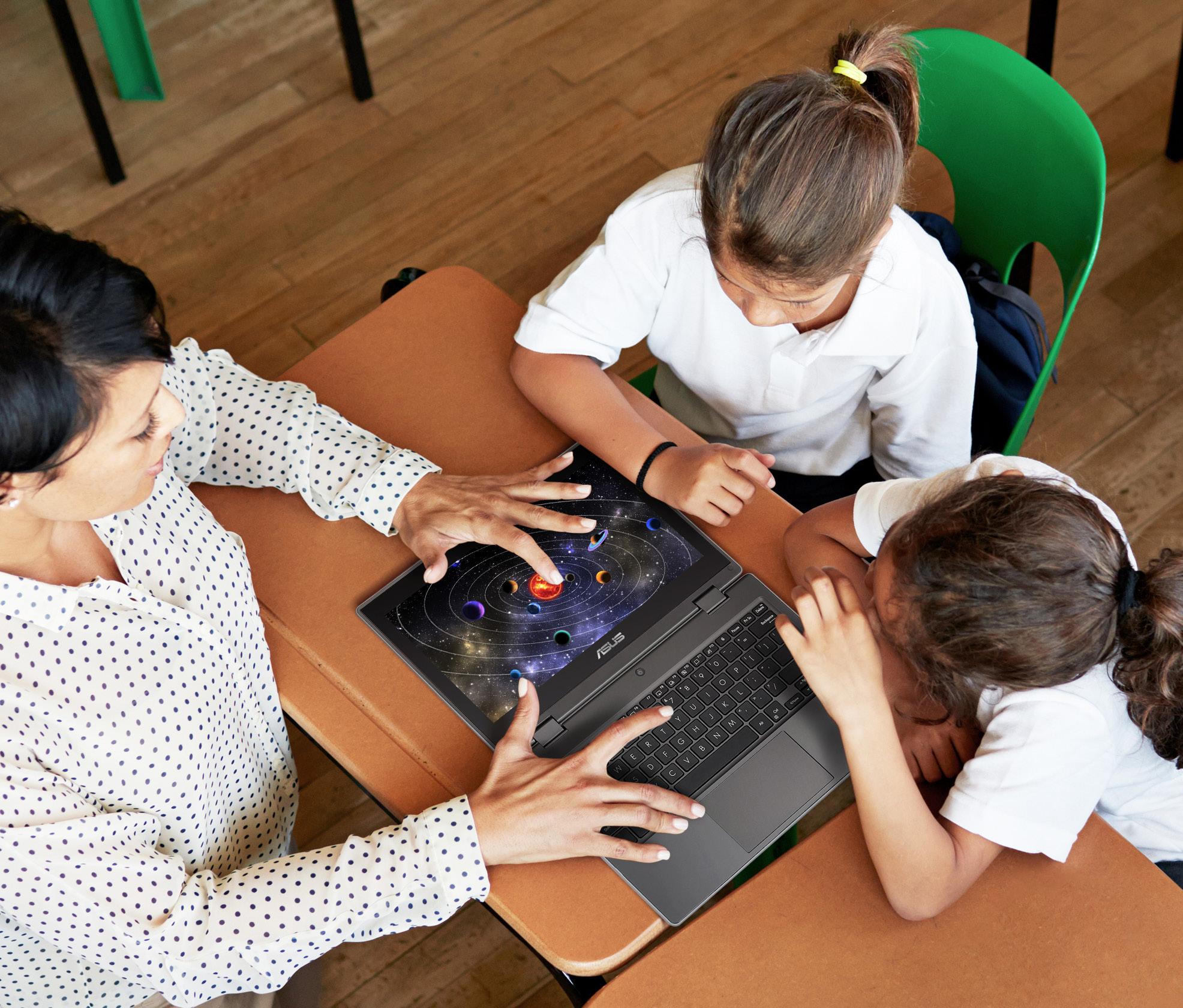




Finding the right edtech products for your school can be difficult. Who do you turn to for advice? Who can you trust to guide you? How can you see beyond the hype to find the edtech that will make a difference in your school?
The LendED platform is a free-to-use online portal produced by the British Educational Suppliers Association (BESA) and supported by the Department for Education (DfE).
A portal for finding the right edtech product
7. Decide whether to keep or return the product.
8. Write a review on the platform, so other schools can benefit from your experience.
Review your school’s edtech provision
WRITTEN BY Dave SmithThe platform provides extended free access to edtech resources from suppliers that have been subject to BESA’s stringent safeguarding, data privacy and quality assurance controls. It allows you to search and select edtech products from reputable suppliers, read case studies from fellow teachers and then request a free, no-obligation trial.
How does the portal work?
It is designed to help you locate edtech products and services to meet your needs. It provides details on hundreds of products backed by the DfE.
1. Use the search and filter functions to identify possible solutions for your school.
2. Read the product entry including the case studies and testimonials.
3. Identify the solution that best suits your school.
4. Request a free trial using the button on the product page.
5. Wait for the supplier to contact you to set up the free trial (usually within two working days).
6. Try the product out in your school, without any obligation to purchase.
BESA has also created an EdTech Leadership Briefing Paper to help schools review their current edtech provision and ascertain what resources may be needed, which is where LendED comes in. You can download the briefing paper to:
• Gain a contextual understanding of the current provision and use of edtech in UK schools

• Enable your school to make informed, data-driven decisions with rare access to up-to-date information on school spending and priorities
• Consider key aspects of your edtech strategy with key leadership questions and a quick audit tool
• Understand how the new Department for Education digital and technology standards will impact schools (England only)


Several real-world examples demonstrate the effective use of AI in primary and secondary education.
~Gavin Hawkins, Chair of the Board, NAACE
With knowledge and quality answers just clicks away, especially with advances in artificial intelligence (AI), education is transitioning from the era of answers to the era of questions.
In an age where AI swiftly provides answers, the value of asking the right questions is emerging as a key skill for teachers and students.
Long before the advent of AI, digital technologies had already revolutionised access to information, prompting educators to emphasise active learning. AI’s growth in education is simply a continuation of this trend, but with a distinct twist: now, both teachers and students are the ones asking questions.
Both must not only perfect the ‘art of the prompt’ but also critically assess the relevance of AI-driven responses. Still, a teacher’s questions remain crucial as they frame knowledge within the appropriate context.
Pioneering the questions era
Boasting over 50 million users, and 2 million teachers using its student response system, Wooclap has been instrumental in turning passive students into active learners since 2015. At the University of Edinburgh, the University of Sheffield or Sciences Po Paris, educators are embracing the power of regularly asking questions to nurture critical thinking. AI is now opening new avenues for interactive classes, but are teachers equipped for the change?
AI: a real time-saver for teachers
Time is of the essence for teachers, and its scarcity is their biggest hurdle. ChatGPT might be a powerful content creator, yet its interface requires a certain familiarity and does not integrate seamlessly with routine teaching tools.
This is where Wooclap aims to be a gamechanger with its new AI feature. It allows teachers to generate multiple-choice questions (MCQs) and open-ended questions in seconds. Beyond mere time-saving, this innovation offers personalised training content tailored to any subject, bridging the gap between AI potential and practical classroom application.
The future of education is inquisitive. As Yann Ferguson, scientific lead of the LaborIA project, puts it: “What makes the difference when we’re looking for a solution to a problem is the quality of our questions. We have to learn to question and reason.”
 WRITTEN BY Annelies Dejonckheere Head of Expansion, Wooclap
WRITTEN BY Annelies Dejonckheere Head of Expansion, Wooclap


By leveraging AI technologies, students and teachers can benefit from enhanced personalised learning experiences, improved administrative tasks and access to a wealth of educational resources.
The integration of artificial intelligence (AI) in education has the potential to revolutionise the way students learn and practitioners teach in primary and secondary education.

Tailored learning benefits with AI
One area where AI can greatly benefit teachers is in the realm of personalised learning. AI-powered adaptive learning platforms can analyse individual students’ strengths, weaknesses and learning styles to deliver tailored educational content.
Platforms like Khan Academy and Duolingo employ AI algorithms to provide personalised lessons and recommendations to students based on their performance and learning progress. By adapting content to students’ specific needs, AI enables teachers to cater to diverse learning styles and foster individualised learning experiences.
Helping teachers save time
AI can assist teachers in automating administrative tasks, saving valuable time and allowing them to focus on instruction. For example, AI-powered grading systems can provide immediate feedback on assignments and assessments, reducing teachers’ workload and providing students with timely insights.
Moreover, AI chatbots can address common student queries, such as homework or schedule-related questions, easing the burden on teachers and allowing them to dedicate more time to meaningful interactions with students.
AI educational resources can augment traditional teaching methods by offering vast amounts of data and information. Virtual tutors powered by AI can
engage students in interactive conversations, answer questions and provide explanations on various subjects. AI can also analyse student data, such as performance metrics and behavioural patterns, to identify areas where additional support may be needed.
Several real-world examples demonstrate the effective use of AI in primary and secondary education. Take the case of Carnegie Learning’s Mika, an AI tutor that uses natural language processing and machine learning algorithms to understand students’ responses and provide personalised feedback in mathematics. It has been shown to improve students’ performance and boost their confidence in problem-solving skills.
Another example is the use of AI-based virtual reality (VR) applications in science education. This technology fosters engagement and deeper understanding, making learning more interactive and enjoyable.
Through adaptive learning platforms, AI-powered grading systems, virtual tutors and immersive VR experiences, teachers and students in primary and secondary education can benefit from enhanced educational experiences, increased efficiency and improved learning outcomes. Educators can unlock new opportunities for growth, innovation and improved educational outcomes for the next generation of learners.
Traditional classrooms are embracing technology, and an innovative suite of interactive displays, laptops and cloud-based systems are being seamlessly woven into the fabric of modern learning environments.
Amidst an ever-changing educational landscape, ASUS Education stands at the forefront of a profound paradigm shift with digital solutions shaped to enhance modern learning.

company due to its robust, modular design.
WRITTEN BY Nick Vora End-User Account Director & EMEA Chrome SpecialistOne of the most prominent trends steering the educational ship is the widespread adoption of online and hybrid learning models. The Covid-19 pandemic catalysed a seismic shift in our approach to learning, ushering in an era where physical boundaries no longer limit the pursuit of knowledge. This shift has not only granted learners the freedom to access a diverse array of resources, but it has also ignited a spirit of exploration that transcends geographical confines.
Continuous, personalised learning
ASUS has been working closely with Sandringham School in St Albans. The school has been implementing a oneto-one device programme. Initially, students could bring their preferred devices to class, but this agnostic model led to inconsistency in device quality and functionality. In 2022, Mark Allday, Deputy Head Teacher, assessed various manufacturers and settled on the global technology
The school chose the ASUS CR1100 Chromebook, which features a touchscreen with a stylus and ‘world camera,’ intended to promote independent and continuous learning beyond the classroom. The shift from physical textbooks to cloud-based resources further minimises waste and enhances accessibility. The school’s vision integrates effective teaching with digital tools, prioritising authentic and valuable learning experiences that prepare students for the future.
approach; instead, adaptive algorithms now curate content and learning experiences to suit the unique needs of individual students. This evolution has amplified engagement, inviting students to embark on a journey of discovery catered to their learning preferences.
Solutions supporting inclusive learning ASUS’s impact transcends the walls of physical classrooms, extending its reach to encompass hybrid and remote learning models through maximising cloud-based offerings. The brand’s steadfast commitment to dependable technology ensures a seamless educational experience, adaptable to diverse circumstances and needs with the goal for educators to channel their energies into fostering critical thinking and igniting curiosity.
WRITTEN BY Mark Allday Acting Deputy Headteacher & AAT Director: Digital Strategy
A cornerstone of this transformation is personalised learning, an endeavour fortified by the marriage of data analytics and artificial intelligence. Education is no longer confined to a monolithic
As educational technology continues to evolve, the company’s solutions illuminate a transformative path toward a boundless and inclusive learning future. Offering scalable and cost-effective solutions dismantles barriers to access and extends equitable learning opportunities to students of all backgrounds.


Adaptive algorithms now curate content and learning experiences to suit the unique needs of individual students.
The shift from physical textbooks to cloud-based resources further minimises waste and enhances accessibility.Image provided ASUS

Effective edtech tools are those that supplement the learning experience, making it more equitable and accessible.
Nothing can replace the impact that an inspirational educator has on their students. Educators can shape attitudes towards not only the subject but their beliefs about themselves, their capabilities and what they can achieve. I hope everyone has a memory of that one teacher that pushed them to reach their full potential — I do, and I will be forever grateful to her.
Good edtech tools provide support Edtech is ultimately only a tool — albeit a powerful one — to help educators enhance their teaching practice and improve the student experience. For instance, by using data to identify where extra support is needed or adaptive tools to deliver it easily and at scale. When reflecting on my educational experience versus what is available now to support personalised learning, I can only imagine what mastery level our maths class would have achieved with an adaptive learning tool like ALEKS.
In 2020, we saw a rush to adopt edtech as a convenient, but often crude, substitute for the classroom experience. Now, we see many fantastic examples from our partners of courses that are deliberately hybrid, drawing on the best elements of face-to-face and digital. The key is that the technology is treated not as a bolt-on — or a replacement for teaching or a substitute for students who don’t want to come on campus — but as an integral part of the course. Technology should help students meet and master the learning objectives.
Empowering all educators and learners
With McGraw Hill Connect, we emphasise the distinction between provision and purpose. Connect has had a massive impact on student outcomes where it is deployed strategically — be it in ‘flipping the classroom,’ providing more practice and application activities as homework or simply by making trackable readings mandatory. For me, what’s most important for the future of edtech is not exciting technologies like ChatGPT or the metaverse, it’s understanding how technology can empower educators and create a more equitable, sustainable and accessible future for all.

Blended learning is the merging of in-person, classroom education and remote, digital tools. Adopted correctly, blended learning can encourage inclusivity and benefit students and educators alike.
The integration of technology into education, commonly known as edtech, has evolved rapidly in recent years, culminating in the rise of blended learning — a transformative approach that combines the best of traditional classroom instruction with the advantages of learning online.
The nationwide lockdowns in March 2020 forever changed the higher education landscape. In a matter of weeks, educators and providers were expected to move fully online to deliver their course content. The pandemic acted as a catalyst for the widespread adoption of remote education.
WRITTEN Managing Director,
Managing Director,





However, what occurred during this period was not a blend by any means; schools and universities were forced to adapt to online tools and resources. Yet, it is this very challenge that allows the sector to re-evaluate and develop a more intentional and balanced approach to teaching and learning.

Blended learning can harmonise in-person classes with digital resources, allowing institutions to cater to diverse learning styles and needs while maintaining the benefits of the social aspects of attending university.

The policy implications of blended learning are profound. Especially in the age of rapid technological advancement and change, the sector must evolve
WRITTEN BY Alyson Hwang Researcher, Policy Connect
strategies to embrace edtech innovations; empower educators to wield digital tools effectively; and support students to fully leverage the benefits of learning on-site and remotely.

The digital experience insights survey of higher education students (2021/2022) showed a positive snapshot of student perspectives towards blended learning. An overwhelming majority rated the quality of online learning environments to be above average.
The mixed approach to teaching and learning introduces flexibility and empowers selfdirection, giving students more autonomy over their academic journey. Using both informal and digital spaces to deliver course material can also lead to economic benefits. These benefits will only intensify with the advancement of mobile technologies and bolstered digital infrastructure, which should both be seen as sector priorities for educators and policymakers.
Higher education providers must embed student voices in strategising a framework to navigate the edtech revolution. Flexibility, inclusivity and adaptability must underpin the guiding principles for institutions. Only then can policies have the potential to pave the way for an educational system that empowers learners from all walks of life.
The mixed approach to teaching and learning introduces flexibility and empowers self-direction, giving students more autonomy over their academic journey.
Technology can shape the development of adaptive baseline assessments to improve student engagement and accessibility.
As Cambridge Centre for Evaluation and Monitoring (CEM) turns 40, we look back on the technologies that shaped baseline assessments and what the future holds.

What can we learn from 40 years of assessments?
The shift from paper-based tests to online platforms, made possible by the availability of computers in schools since the 1990s, reduced teacher time spent marking and significantly improved the engagement, accessibility and scalability of assessments. This technological advancement has enabled us to reach a larger student population worldwide, as well as gather, analyse and return real-time data on student performance and potential.
Developing adaptive assessments
The development of our adaptive assessments has been made possible with sophisticated psychometric models like Item Response Theory (IRT), which allows you to build adaptive tests that dynamically select items that are appropriately challenging for each test taker. Technology has also facilitated the integration of assessment data with personalised learning and information management platforms in schools. The utilisation of big data, learning analytics, psychometrics, statistical software and algorithms has significantly enhanced the capacity to process and analyse large volumes of assessment data.
Cambridge CEM now analyses a staggering 43 million data points each year, benefiting hundreds of thousands of students and using powerful predictions that enable educators to create customised learning paths.
Looking ahead, Artificial Intelligence (AI) is expected to play an even more prominent role in the future development of baseline assessments. But will AI be part of the day-to-day routines and processes of teaching and learning? AI certainly offers many opportunities, with ethical considerations.
Imagine the impact on students with the evolution of holistic assessments, that can offer teachers a comprehensive cognitive, noncognitive and meta-cognitive profile of their students. Imagine an accurate, large-scale, cost-effective, time-saving pathway that enhances the human experience of schooling for truly personalised learning.
Ongoing goal to advance learning
Nick Raikes, Director of Data Science at Cambridge University Press and Assessment explains: “We are in the business of providing standardised information on what learners know and can do. It’s really important that we provide valid, reliable, useful information. Data is absolutely fundamental to our business.”

After 40 years of assessment development, our aims remain unchanged — to continue our commitment to harnessing the best technological solutions while retaining validity and giving primacy to the role of the teacher through effective assessment tools that generate insights and facilitate data-driven decisionmaking.
When thinking about educational technology (edtech) to support our special education needs or disability (SEND) learners, we need to think about everything that might sit below the surface.
One of our most famous exports in Belfast is the Titanic. If we think about that notorious iceberg, we know that only 10% was visible above the waterline, yet the 90% that the captain needed to know about was invisible.
When thinking about text-to-speech as a tool to support dyslexic students, we forget those under the waterline who could also benefit. Reading aloud helps to reduce screen time, with understanding new topic content and with revision. By giving everyone access, all learners can benefit.
To find out more about the future of assessments, join our free webinar on 10 October with leading assessment specialists: cem.org/ webinar/40thanniversary
WRITTEN BY Patrick McGrath Head of Education Strategy, Texthelp

This is also true of our pupils if we think about the percentage with identifiable, or perhaps, obvious individual needs. Any teacher will tell you, however, that this is not reflective of the students who need support — those who struggle silently or those who simply learn differently.
We need to think about the stigma we apply when we give a certain subset of learners access to technology. The branding of tools as ‘assistive technology’ can create barriers for those who don’t want to be labelled. During the extended periods of remote learning, we saw a quadruple rise in the use of assistive technology. That’s because everyone found a benefit. We need to ensure there is equity of access to the same tools, for all learners to use when they need them.
We need to provide students with tools that can help them understand and be understood in different ways.
Start designing lessons with your toolkit and students’ needs in mind. Think about the format of your classroom activities and the instructions that go alongside them. Could you provide instructions in multiple formats (written and oral, for example)? Could you provide a list of terms and their meanings ahead of presenting new topics, for students to understand, before time, what new words and language mean? If the answer is no, edtech can now put this in the hands of every learner with ease.
The most important thing to remember when using edtech is to provide opportunity. We can design learning well and select the right tools, but we need to give our SEND students the opportunities to use them.
We need to ensure there is equity of access to the same tools, for all learners to use when they need them.
Digital literacy can be defined as ‘the skills and knowledge required to be an effective, safe and discerning user of a range of computing systems.’
According to the National Centre for Computing Education’s (NCCE) ‘Digital Literacy Within the Computing Curriculum’ 2021, there are five key areas that need developing to help prepare for life in the digital world.
Five essential components of digital literacy
be targeted through video streaming sites and gaming platforms, offering them free ‘rewards.’
WRITTEN BY Andy Place Inspector for Computing, Online Safety and Education Technology Havering Education Services
1. Practical skills: This is about decision-making and choosing the right technology, correct software and apps to use for the task.
2. Finding information: Use the correct search terms, refine searches and identify suitable sites.
3. Critical thinking: Questioning what you find. Is it reliable? Do other sources verify this information? Is it bias, fact or opinion? Who wrote the information and when was it written?
4. Online safety skills: This is about understanding the risks and knowing how to stay safe online. What do and don’t we share? How to report concerns? Protecting our identity and considering our digital footprint.
5. Communication and online behaviour: Developing our ability to communicate and collaborate safely. Understand what is legal and illegal, such as copyright. Know how to behave online and respect others.
What are the external factors that make this challenging?
• Online phishing scams and cybersecurity attacks are becoming more sophisticated, and it is harder to spot fake notifications and emails. Younger children tend to
• The role of influencers often conveys only one point of view. Computer software can manipulate the way celebrities look; having perfect bodies. The use of clickbait encourages us to read articles; often, these contain disinformation and misinformation, so being able to recognise this is becoming more pertinent.
• The dramatic rise in the use of artificial intelligence (AI) over the past 18 months is making it more important to question what we see. The use of deep fakes and manipulation of voice technology is making it extremely hard for us to recognise what is real and what is computergenerated.
Possible consequences of AI and using it effectively The way social media and streaming platforms recommend future content to watch based on viewing habits automatically generates more of the same. Are we, therefore, getting a balanced viewpoint? AI software can generate images and online assignments, so how easy is it to differentiate between a student’s work and AI? However, it shouldn’t be about combating AI but instead working in tandem with it. It is here to stay. Our young people are the future and will be using it for jobs that may not even exist yet. Let’s embrace AI in education but ensure digital literacy skills are at the forefront to always question what AI is telling us.
Approximately 10% of the population has dyslexia. That could mean up to three students in every class. Although, we know that these numbers are likely much higher — now, edtech can support students with dyslexia.
When I take my glasses off, I find it hard to read; and I’d really struggle to drive a car. It’s not an intelligence thing, it’s a vision thing. Dyslexia is similar. With the right tools, all students can thrive.
Literacy challenges for students with dyslexia
notes help learners to study more independently.
Technology works best when students can use it as part of their normal way of working. This includes in class, at home and during exams, where students with dyslexia may qualify for access arrangements — for example, to allow a computer to read exam papers.
WRITTEN BY Amy Peacock Senior Content Marketing Specialist, TexthelpA recent survey by global technology company Texthelp highlights the true scale of literacy challenges in the UK. The report also reveals that technology is key to breaking down literacy barriers in education.

Students with dyslexia have a choice in how they learn
With the right tools, learners with dyslexia can choose how they engage with tasks. They can use text-to-speech to have words read aloud and track the words on a screen to increase comprehension.
They can use voice typing and prediction to get their ideas straight onto the page. Often, we see this leading to an increase in the range of vocabulary used, as they don’t have to worry about spelling.
Learning happens everywhere
When doing homework, students with dyslexia may find themselves needing a teacher for help with reading or spelling. This can reduce confidence and cause problems with focus. Tools such as digital highlighters and voice
Tools necessary for some but beneficial to all
Thinking of a tool like text-to-speech, you’ll agree that it’s great for dyslexic students. But it’s also useful for that A-Level student working towards a history exam. They can listen to questions to aid understanding or listen to complex answers to proof and improve.
By making these tools available, students can choose when to use them. This will also help reduce the stigma for students who need the tools.
Preparing for the future with dyslexia support Students don’t just leave school and leave their dyslexia behind. Technology can give them the tools they need to overcome barriers and unlock the potential of dyslexic thinking.